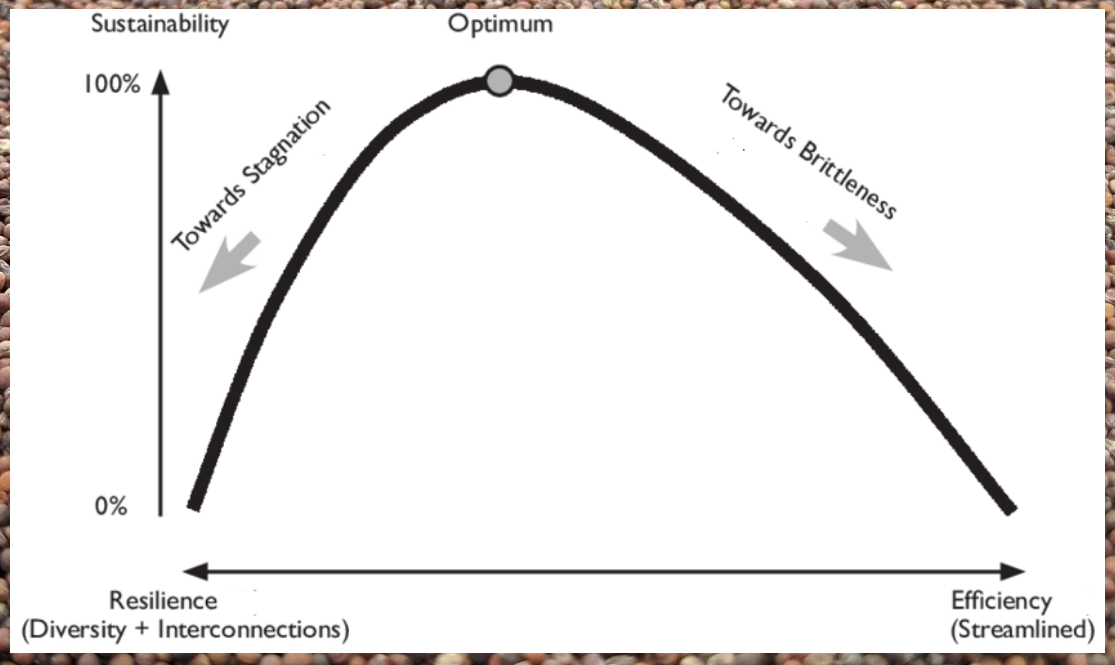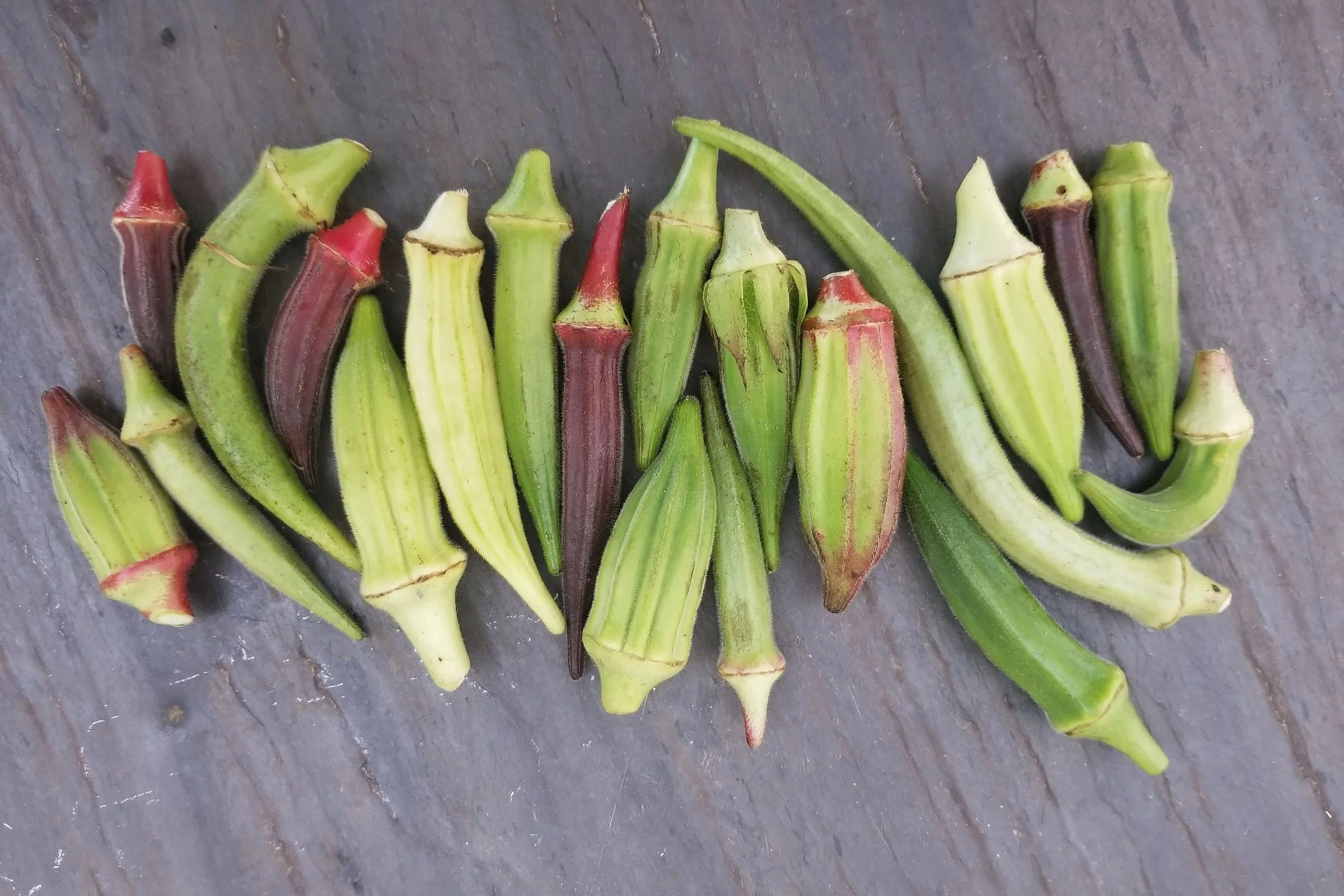The Second Ultracross: Okra, lessons learned
In 2021, Jordan Collins joined Utopian Seed Project for the summer as our Southern Exposure Seed Exchange sponsored research assistant. Jordan’s focus was on okra and so we planned a large planting of 85 okra varieties, plus 15 closely related species. The okra varieties included a selection of USDA sourced high oil seed varieties as well as many heirloom varieties. Okra is self-pollinating, but can also outcross as much as 40% (depending on pollinator activity).
Chris and Jordan in the okra patch!
In pursuit of radical diversity, this genetic mashup certainly hit the mark. However, we quickly realized that there were some challenges in embracing unchecked diversity. The high oilseed varieties were mainly from Sudan and had pods with a glass-sandpaper like texture. Clemson Spineless Okra was the result of 40 years of backyard selection for spineless pods - there is good reason to celebrate this predictable and stable trait! A second surprise was the unintentional interspecies crossing. Abelmoschus manihot subsp. tetraphyllus showed up in the progeny at about 1% - the pods are effectively inedible due to spines and non-fleshy characteristics. A majority of them also seemed to be sterile. Abelmoschus caillei also showed up as an interspecies cross, at a much lower rate, but again producing seedless pods. In addition we had mixed dwarf heirlooms with extremely tall varieties.
This all meant that Ultracross Okra 1.0 was extremely diverse and therefore extremely resilient. Anyone looking to grow okra at the margins of its comfort level could start with this mix. The diversity and possibilities are very exciting for the researcher and explorer. However, as a practical food systems functioning okra population, it had lots of drawbacks. I like to use it as an example of diversity gone too far, of seed anarchy which doesn’t serve our needs particularly well.
Resilience: Diversity vs Efficiency
What we are looking for is a balance of diversity and utility. This graph is a perfect representation of the concept, and arguably Ultracross Okra 1.0 was a little too diverse!
Ultracross Okra 2.0 is part of Utopian Seed Project's broader work to introduce more diversity into food and farming. In 2024 we planted 32 varieties of Chris Smith's (James Beard Award winning okra lover) favorite okra varieties. They were all planted together in the same field and allowed to freely cross-pollinate over the course of the growing season. Utopian Seed Project operates a no-till, no-spray farm, which means we are rich in pollinator actively. Suffice to say, the okra had a promiscuous summer. We saved seeds from pods of all the different varieties, knowing that the children (the seeds we are now distributing) will be a beautiful and diverse mix of many okra types. You'll see red, green, and mixed okra pods. They'll be short, long, and fat. They'll be round, ridged and slab shaped. It'll be an exciting exploration of okra diversity. There's even a chance you'll find some plants you don't like, but that's OK too! Our aim with our ultracross projects is to offer up high levels of diversity so that you, the gardeners and farmers, can pick and choose your favorite plants to save seed from, or just maintain a highly diverse population that will shift and change with the seasons. Diversity translates to resilience and offers high levels of adaptive capacity. But just as important, is the invitation to develop a personal and unique relationship with okra.
As a heat loving plant in the mallow family, okra germinates best in warm soils, but can also be transplanted in areas with cooler springs or shorter summers. We give plants 12" spacing, and generally expect first flowering and pods between 50 and 60 days. Note: the diversity of Ultracross Okra 2.0 means that you could select seeds from plants that are quick to produce, or more productive in cooler climates. Okra will keep producing high quality pods until the day length shortens towards fall and the nights begin to cool, frost will be the final knell. The entire plant is edible - leaves, flowers, pods, and seeds. Craft folks can use the long bast fibers from the stalk at season's end.


